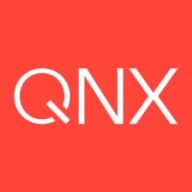

Red Hat Enterprise Linux RHEL and QNX Neutrino are competing in the operating system landscape. While RHEL offers support and cost-effectiveness, QNX Neutrino stands out in feature richness, making it a strong option for those prioritizing capabilities.
Features: RHEL is known for its robust security, expansive software support, and scalability for enterprises. QNX Neutrino offers real-time performance, high reliability, and minimal downtime, suitable for embedded systems and critical operations.
Ease of Deployment and Customer Service: RHEL is recognized for straightforward deployment and comprehensive support services for large enterprises. QNX Neutrino involves a more tailored deployment for embedded environments but provides reliable integration. RHEL's strength is in its wide reach and customized solutions, whereas QNX Neutrino focuses on specialized expertise for embedded systems.
Pricing and ROI: RHEL provides competitive setup costs and efficient resource management for a favorable ROI. QNX Neutrino's higher initial investment is balanced by its reliability and real-time performance, which are valuable for industries needing such capabilities. RHEL is more accessible in cost, and QNX Neutrino adds value through advanced features for niche applications.

QNX Neutrino, a real-time operating system from BlackBerry, delivers robust performance for embedded systems across industries like automotive, aerospace, and telecommunications.
QNX Neutrino is designed for high-performance embedded applications, providing deterministic responses that are essential in systems where timing is critical. Its microkernel architecture ensures maximum security and reliability, making it a trusted choice for developing safety-critical applications. QNX Neutrino's ability to support multitasking and asymmetrical processing adds flexibility, supporting resource utilization across different hardware environments.
What are the key features of QNX Neutrino?
What benefits should users look for in reviews?
In industries like automotive, QNX Neutrino powers complex systems such as Advanced Driver Assistance Systems, ensuring real-time data processing for enhanced safety. In aerospace, it supports flight control systems where reliability and timing precision are crucial. Telecommunications benefit from its scalability and fault resilience, enabling robust network infrastructure.
Red Hat Enterprise Linux is recognized for its stability, security, and performance, serving diverse industries with its robust support and seamless cloud deployment capabilities.
Red Hat Enterprise Linux provides comprehensive server applications across cloud environments, featuring tools like Ansible for enhanced user experience. It integrates OpenShift, Identity Management, and automation, supported by extensive documentation. Users seek easier upgrades, enhanced network virtualization support, and improved live patching.
What are the key features of Red Hat Enterprise Linux?In sectors like finance, telecommunications, and education, Red Hat Enterprise Linux is crucial for running stable, secure systems. Its application spans web servers, data management, and containerization through tools like Kubernetes. Organizations adopt it for on-premises, virtualized, and cloud environments, ensuring robust infrastructure management.
We monitor all IoT Operating Systems (OS) reviews to prevent fraudulent reviews and keep review quality high. We do not post reviews by company employees or direct competitors. We validate each review for authenticity via cross-reference with LinkedIn, and personal follow-up with the reviewer when necessary.